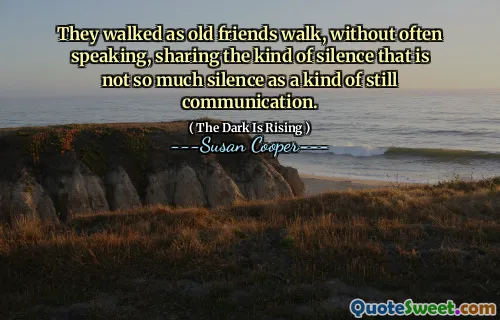The surface of the iron was irregular, but though it showed no sign of having been polished it was completely smooth-smooth in a way that reminded him of a certain place in the rough stone floor of the kitchen, where all the roughness had been worn away by generations of feet turning to come round the corner from the door.
The passage describes an iron surface that, while uneven, possesses a peculiar smoothness. The lack of polish is evident, yet the texture is reminiscent of a specific worn area in the kitchen's rough stone floor. This comparison highlights the transformative effect of repeated use over time, as countless feet have polished that spot into a smooth finish.
This metaphor underscores the idea of history and memory, suggesting that both the iron and the kitchen floor bear the marks of their past interactions. The connection between these two surfaces reflects how daily life can leave lasting impressions, shaping their character in subtle, yet significant ways.






